Biohabitats Projects, Places, and People
Quinn Caralle
Projects
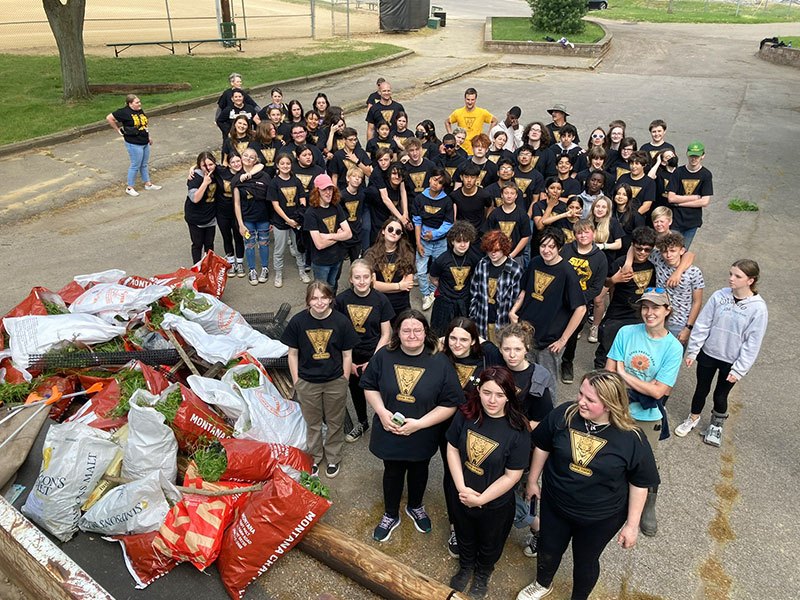
Continued Community Commitment to Kelsey Creek
After another volunteer day at the restored Kelsey Creek, all 10+ year-old trees at the project site that were still in tree cages are free! This spring, Biohabitats’ Water Resources Engineer Erin Mundorf and the City of Cuyahoga Falls’ Community Outreach Coordinator Bryce Pulley worked with the 8th graders from Bolich Middle School to remove tree cages, clear invasive garlic mustard, and clean up litter.
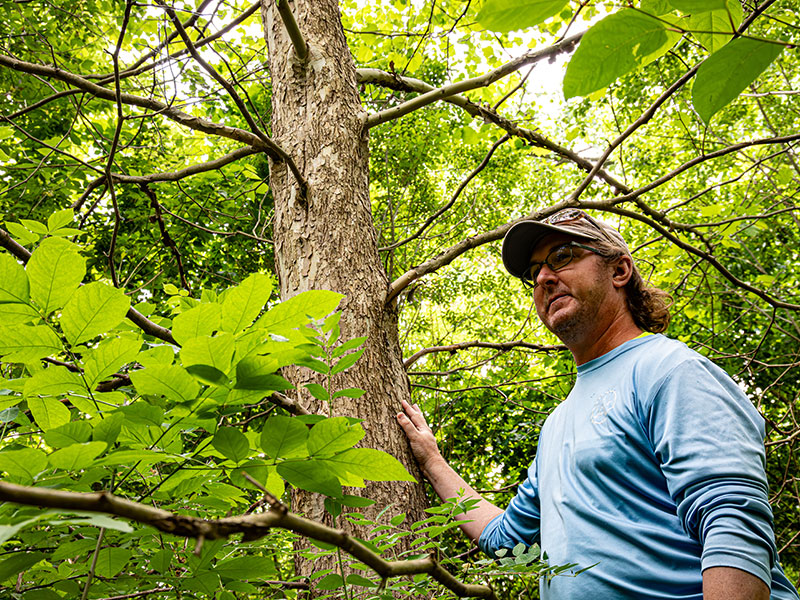
This wasn’t the first time that Erin, Bryce, and a crew of eager volunteers improved the project site. Erin grew up in the area and would spend time along Kelsey Creek in Kennedy Park, and years later as a Biohabitats employee, she noticed invasive species and old tree cages that needed to be removed from the trees planted by the project team in 2013. After reaching out to Bryce, the first volunteer cleanup was planned in September 2022 with the Summit Soil and Water Conservation District as part of Cuyahoga’s Fall River Cleanup Series. Learn more about Erin’s experience with Kelsey Creek and the initial volunteer day in her blog entry “Kelsey Creek, 10 Years After Restoration.”

A group of Biohabitats team members recently had the opportunity to tour the project site, and the results of the restoration are striking to see. A once degraded stream that was surrounded by mowed lawn and very few trees is now a healthy system that serves as an environmental education centerpiece for an adjacent school, bordered by a green ribbon of lush riparian forest.

The Kelsey Creek Stream Restoration is a wonderful example of how a restoration project can benefit from strong community stewardship. For more information on this project, please contact Kevin Grieser.
Shoreline Stewardship in Action
The community of Cape St. Claire is a close-knit waterfront neighborhood located on the south shore of the Magothy River in Annapolis, Maryland. Concerned about the impacts of climate change, the Cape St. Claire Improvement Association turned to Biohabitats to assess the site and develop a beach nourishment restoration plan to address ongoing shoreline erosion. After the construction phase of the Cape St. Claire Shoreline Stabilization, community members demonstrated their stewardship!
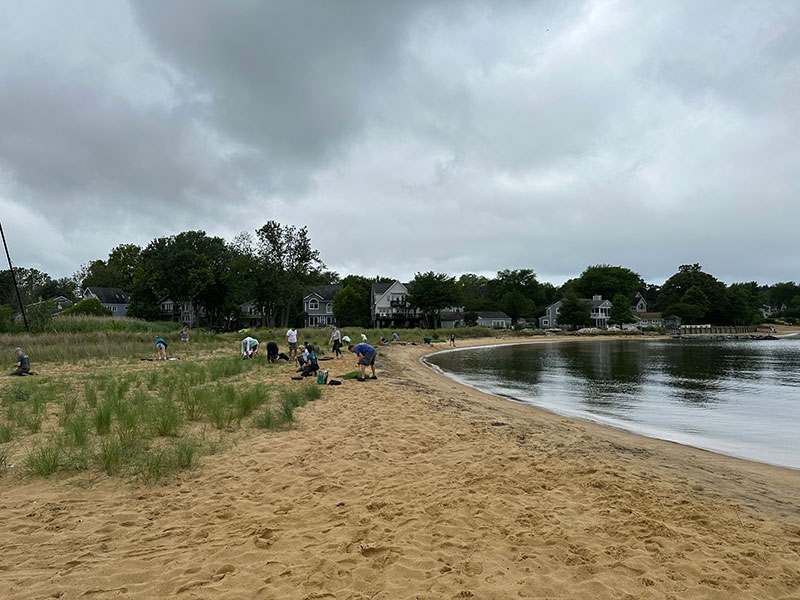
In June, residents, team members from our project partner Alliance for the Chesapeake Bay, and Biohabitats’ senior landscape architect Jim Cooper volunteered on a cloudy day to plant more than 1,500 native grasses (Sporobolus alterniflorus and S. pumilus) along the shore. This was not the first time that the community has put the work in to establish the tidal marsh grasses that provide important habitat for waterfowl, fish, and other aquatic and terrestrial organisms. Continued maintenance of shoreline vegetation will be integral to the success of Cape St. Claire’s restoration efforts. We know that this community is dedicated to their wonderful waterfront habitat and will see it thrive throughout the years! For more information about this project, please contact Joe Berg.
The Building that Gives More than it Takes
After almost two years of construction, one of the most sustainable buildings in the world is now open for business! The Stanley Center for Peace and Security, an organization that advocates for global policy progress towards halting the spread of nuclear weapons, preventing mass violence, and mitigating climate change, celebrated the grand opening of their new headquarters in Muscatine, Iowa, this June. If you happen to be In the area, don’t miss your chance to visit the building, which aims to become Iowa’s first certified Living Building. Tours are available.
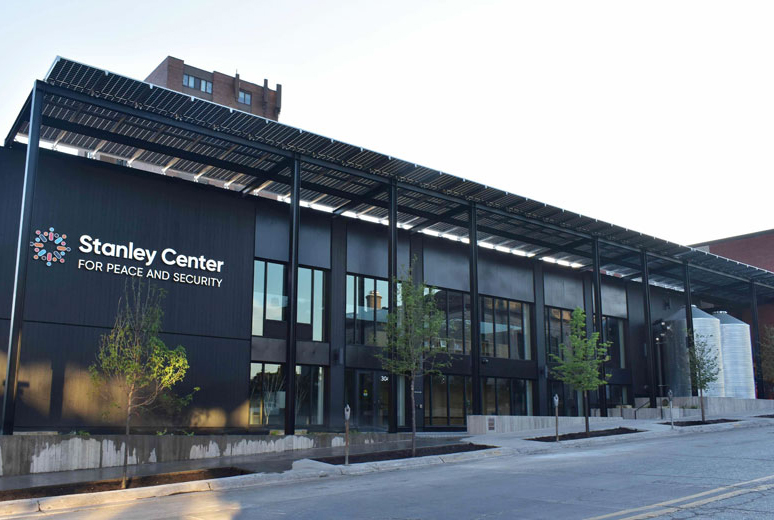
While you’re there admiring the renovations to the former Musser public library building, check out the sustainable water infrastructure designed and engineered by Biohabitats to help the project meet the rigorous requirements of the Living Building Challenge’s Water Petal. We were honored to be part of the integrated design team led by Neumann Monson Architects to help create a sustainable, ecologically beneficial home for the Stanley Center that reflects their core values and commitments. “We couldn’t have done it without Biohabitats,” said Keith Porter, President of Stanley Center for Peace and Security. Check out the documentary about the Stanley Center’s Living Building story, and for more information on this project, please contact Pete Munoz.
Schooled in Stewardship
We believe the children are our future, teach them well at the 16-acre Living Laboratory adjacent to their schools and let them lead the way! Construction is complete on the H2Ohio-funded Otsego Schools Fox-Shank Living Laboratory, a former agricultural field that was transformed into a year-round educational experience for students from the Otsego Local School District. Last year, Biohabitats and Black Swamp Conservancy hosted a design charette where students, teachers, and staff shared their ideas for the project. The project team incorporated the input provided into the design for the site and included a variety of habitats ranging from different wetland habitats to forests and meadows for students to explore and learn from.
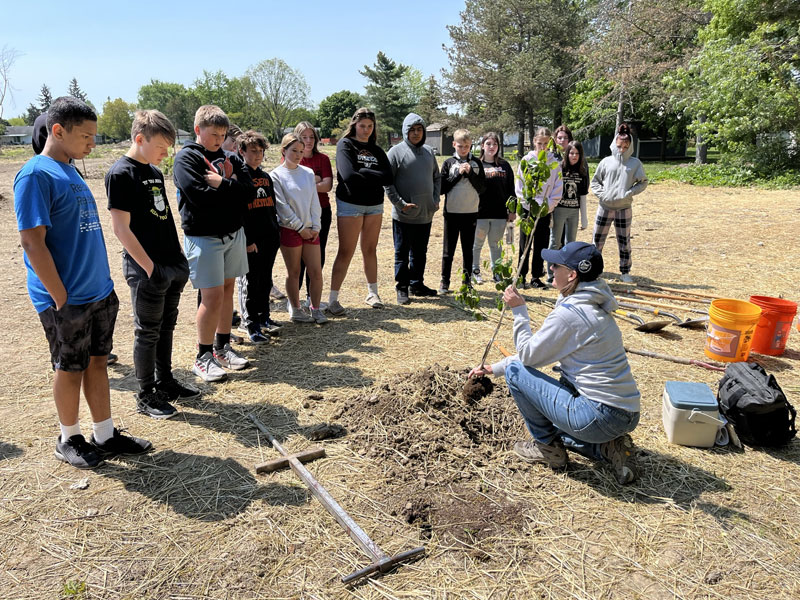
Language and fine arts classes will be able to use the Living Laboratory for artistic inspiration and may have the opportunity to help develop interpretive signage. Students can experience restored wetlands, a food forest, trails, access to Tontogany Creek, and an area where Future Farmers of America will explore sustainable agricultural practices. The possibilities for teachers to use the Living Laboratory for practical, hands-on lessons about ecology are endless, and will inspire the next generation of stewards to protect and preserve the natural systems around them. For more information about this project, please contact Kevin Grieser.
Helicopter-assisted Habitat Enhancement
Thanks to project partners at Metro, Waterways Consulting, and Columbia Helicopters, we’re transforming a former gravel mine along Oregon’s Clackamas River into healthy habitat for beaver, fish, and future generations of aquatic life.
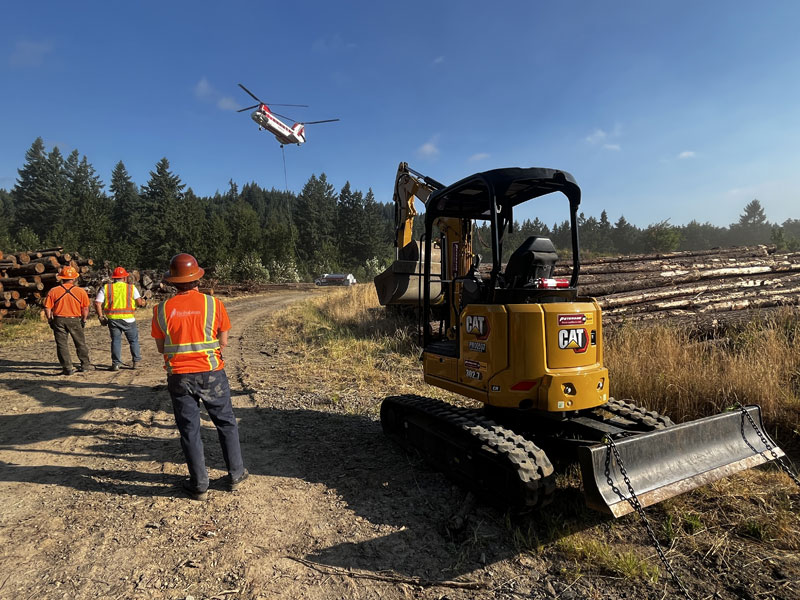
This July, two mini excavators and 150 trees, rootwads, and logs were lifted and flown to the Barton Stream Restoration project site to complete the first major day of restoration construction.
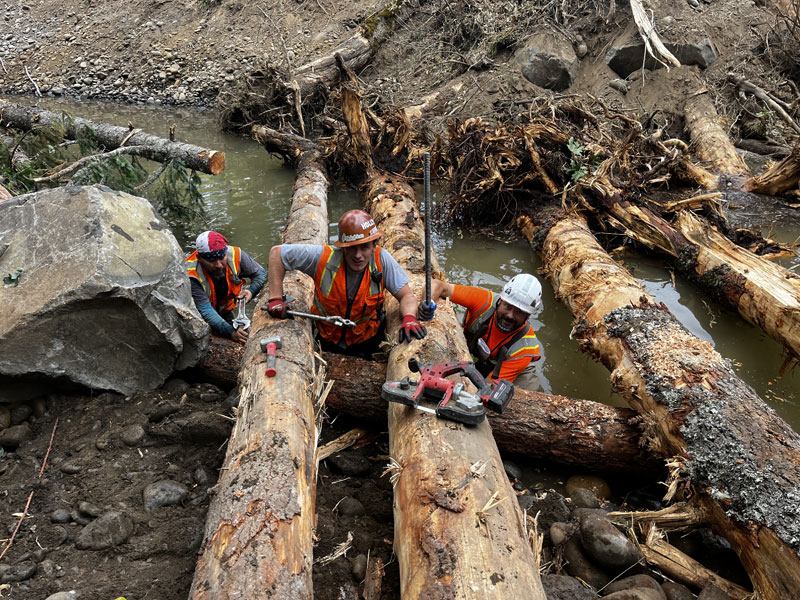
In August, the Biohabitats Construction crew returned to the site to excavate an existing alcove, lay back and fortify the riverbank, and construct an apex log jam to improve the habitat along this stretch of the Clackamas. Rootwads were bolted together before being ballasted with boulders and backfilled with cobble, slash, and native soil to ensure that they remain rooted in place once the alcove is re-watered. Designed by Waterways Consulting and installed by our construction crew, the logjams and deep pools will provide excellent habitat for juvenile salmonids. With temperatures reaching over 100F during construction, working on the river was a great way to beat the heat! For more information on this project, please contact Michael Peterson.
It’s about Dam Time!
The East Branch of the Chagrin River, a state designated Scenic River, joins the mainstem of the Chagrin in Willoughby before flowing to Lake Erie. Several factors, including lack of riparian vegetation and aging water infrastructure, caused severe erosion in both the East Branch and the main stem just upstream of the confluence. With funding from the State’s H2Ohio program, Chagrin River Watershed Partners, the City of Willoughby, the Western Reserve Land Conservancy, and other project partners took action to restore the system. In a design-build capacity in partnership with our friends at Meadville Land Service, we are helping the project partners to restore stability, function, and habitat to the East Branch and mainstem the Chagrin.
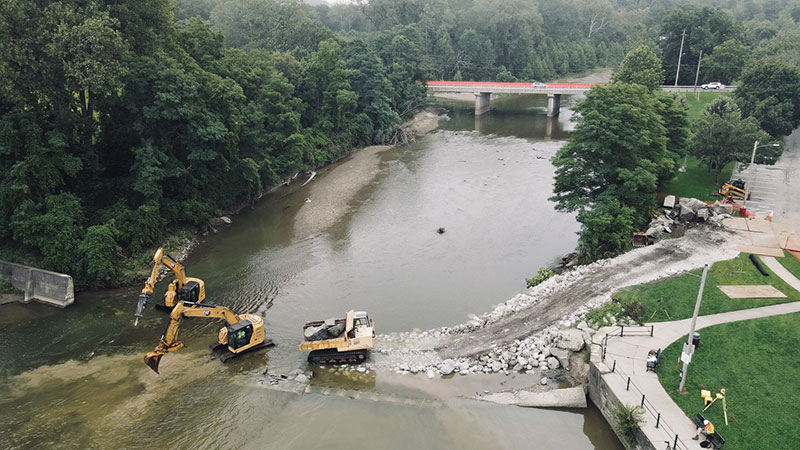
Earlier this month, the restoration hit a major milestone, as remnants from an old dam on the mainstem were removed. The removal of the dam remnants will improve the health of the river, reduce sediment and nutrient pollution to Lake Erie, improve fish habitat for salmonid species such as steelhead, and increase safe and public access to the river.
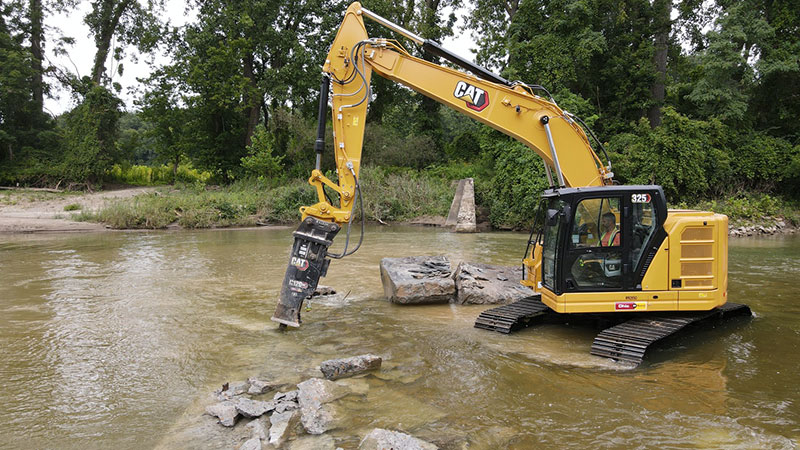
The focus will now shift to the East Branch, and we promise to keep you posted on progress!
Blueway Underway
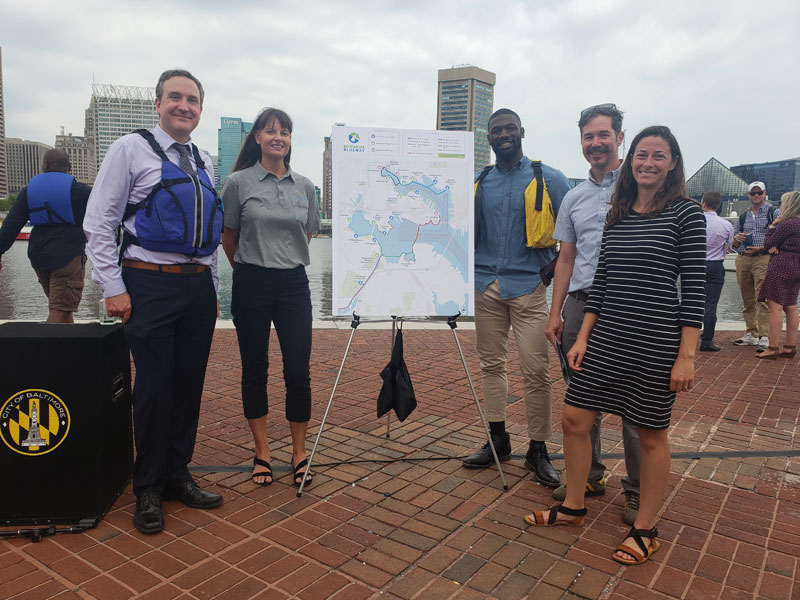
Grab your paddles and life jackets!
Thanks to Waterfront Partnership of Baltimore, Baltimore City Department of Public Works, South Baltimore Gateway Partnership, and many, many partners, the Baltimore Harbor is ready for recreation! After the Waterfront Partnership launched the Healthy Harbor Initiative in 2010 with support from Biohabitats, the water quality of Baltimore’s Inner Harbor noticeably improved. Seeing this improvement, Waterfront Partnership turned to Biohabitats for help in creating the Baltimore Blueway: a network of water trails and public access points for non-motorized craft that connects cultural, historic, and natural sites throughout Middle Branch and the Inner Harbor. Imagine floating by Fort McHenry in a kayak watching a jellyfish drift through the water and spotting a bald eagle a few minutes later!

In August, after a year-long planning phase, Baltimore Mayor Brandon Scott kayaked through the Inner Harbor with local students and project partners to unveil the exciting plans for the Baltimore Blueway. “I saw things as I was kayaking today in the harbor that you didn’t see when I was these young people’s age. I saw jellies, I saw fish, we saw things that we want to see continuously coming back,” Mayor Scott said of his trip to the press conference. We’re honored to be part of the team bringing the Blueway to life! For more information about this project, please contact Rebecca Winer-Skonovd.

Award-Winning Work
Sponsored by the University of New Mexico School of Architecture & Planning and the Thornburg Foundation, the Jeff Harnar Awards honor the memory of New Mexico-based architect Jeff Harnar and help continue his groundbreaking work in contemporary design. This year’s top prize for Contemporary Architecture in the Southwest, was awarded to the Valle de Oro National Wildlife Refuge Visitor Center in Albuquerque, which opened in 2022. As part of the design-build team, which was led by the locally based, native-owned joint venture CF Padilla-Brycon in collaboration with FORMATIVE Architecture and Weddell Gilmore, we designed an interpretive, bosque-inspired wetland just outside of the building, as well as an onsite system that treats wastewater from the visitor center and returns it to the land to recharge groundwater.
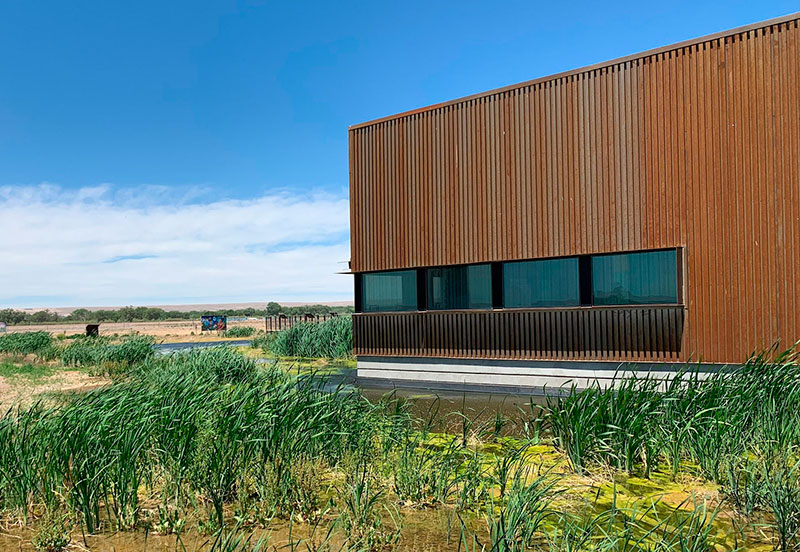
Stephen Teeters of FORMATIVE Architecture summed up the design experience very well in an article on the University of New Mexico’s website, “Our design team collaborated with refuge staff, community members, tribal members, and local artists to develop a comprehensive visitor experience aligned with the needs of the wildlife, people, and the Refuge’s vision.”
Progress Published
In 2021, the Green Infrastructure Leadership Exchange, a Global Philanthropy Partnership, awarded a Collaborative Grant to a multi-disciplinary team including Biohabitats to begin developing a Bioretention Plant Selection Tool (BPST). Earlier this month, ASLA’s The Field blog published an article that shared the team’s exciting progress. This included the development of an outline detailing what a BPST framework could look like and what the ‘top line’ selection criteria might be. Jim Cooper, Biohabitats Senior Project Manager for Landscape Architecture, co-authored the article and looks forward to the next phase of the effort.
Places
Ecological Park is Iconic in Cleveland
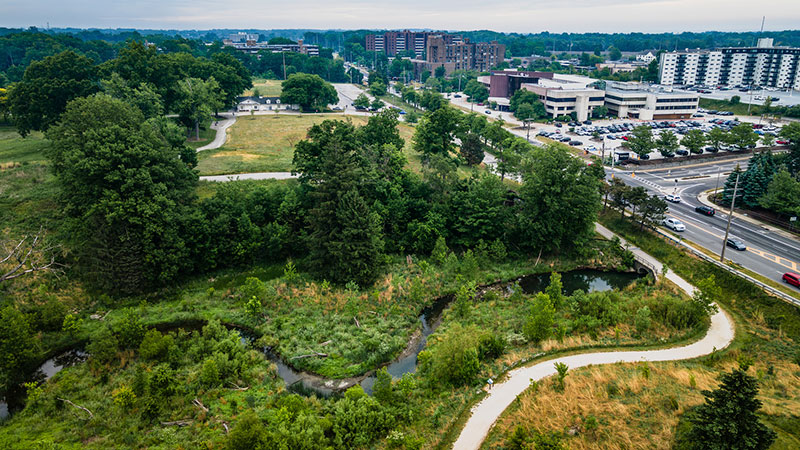
Earlier this month, the Cultural Landscape Foundation’s What’s Out There Weekend Cleveland showcased Cleveland’s local character as reflected by its publicly accessible spaces – including Acacia Reservation! Once a golf course, it is now a 155-acre ecological haven to which hundreds of species have returned.

Biohabitats’ Kevin Grieser, joined staff from Cleveland Metroparks in guiding visitors through this magical place.
International Connections at ESA 2023
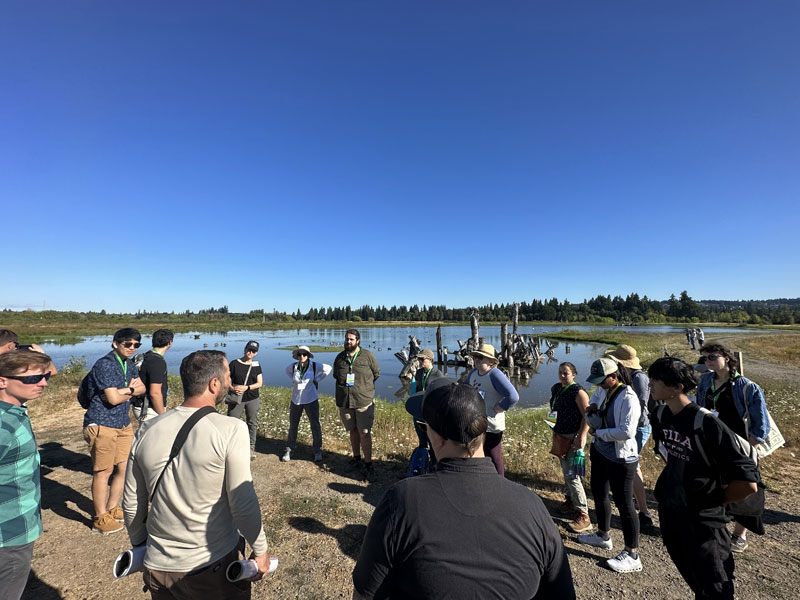
As a part of the Ecological Society of America 2023 Conference, Biohabitats hosted a field trip to the Tualatin River National Wildlife Refuge. Along with our project partners at Clean Water Services and the U.S. Fish and Wildlife Service, Bioregion Team Leader Matt Koozer described the history of the Chicken Creek restoration project and the ecological uplift it provides for this special urban refuge.
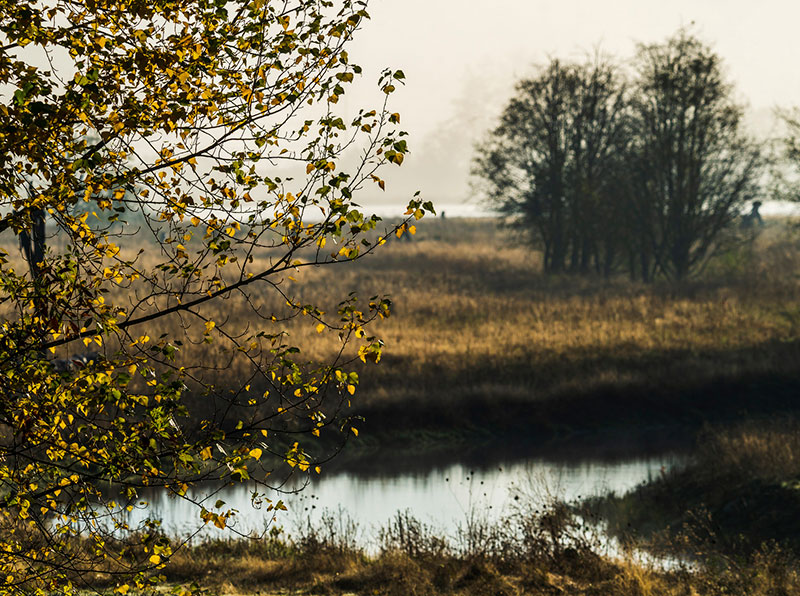
Field trips like these are a great way to reflect on our work and build connections with the international restoration community. Conference attendees from as far away as Germany, Korea, Japan, Taiwan, South Africa, and all over the states joined us. It was a beautiful day for a field trip!
Revitalizing a Campus Resource
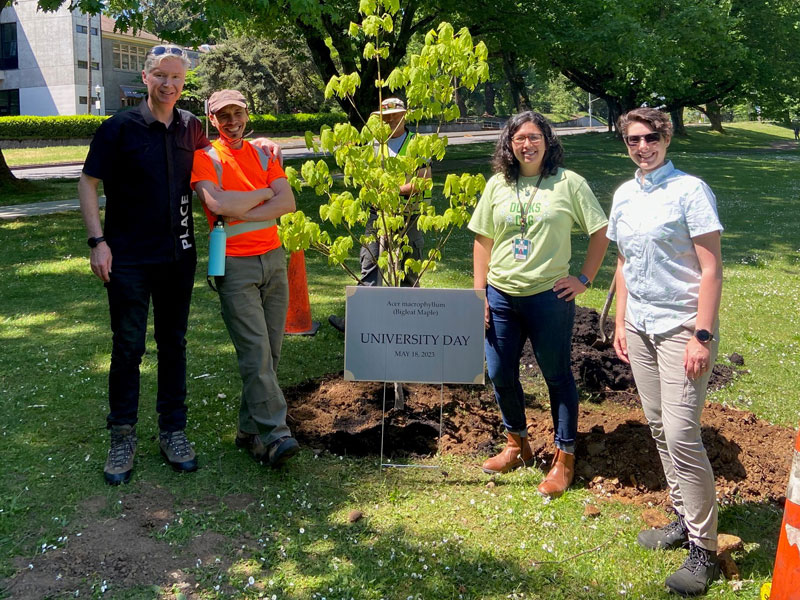
There was a great turnout at the University of Oregon’s Millpond Restoration and Enhancement Project Open House! In May, Biohabitats, KPFF Consulting Engineers and PLACE Studio shared our work and gathered feedback on the Schematic Design that will guide future restoration and enhancement projects at the Millpond and beautified the landscape with student, staff, and community volunteers. It was a beautiful day to plant trees, remove invasive species, and install native plants! For more information on this project, please contact Pete Munoz.
Native Plant Education for All
We had a wonderful time at the Irvine Nature Center’s Native Plant Sale and Workshop, an annual event focused on educating attendees on restoring the native plant habitat in their home gardens.

The schedule was so jam-packed with presentations and workshops from professional growers, ecologists, and Master Gardeners, it was a challenge to choose which sessions to check out! Topics ranged from plant identification, creating a National Park in your own backyard, choosing plants that will survive in tough terrain, how to help butterflies and bees with your native garden, creating your own container garden, and more.
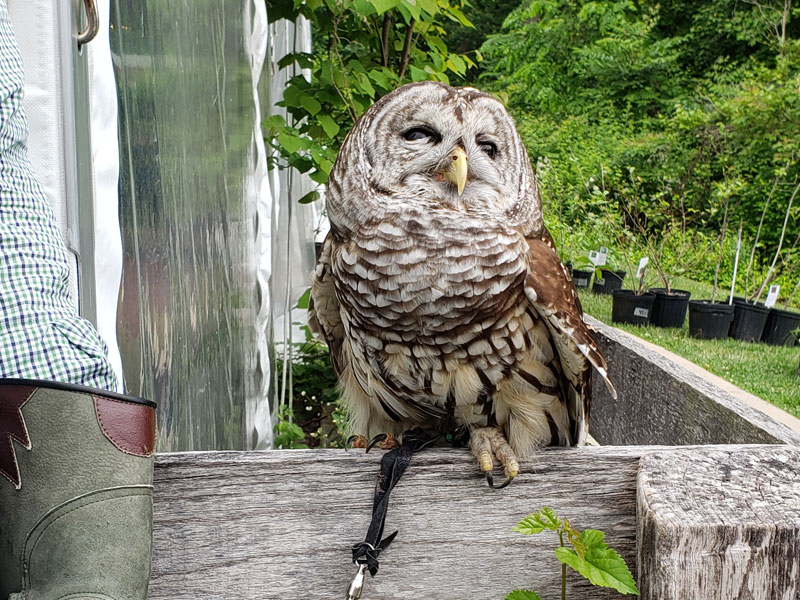
Irvine Nature Center’s 210-acres of trails, forest, restored wetlands, outdoor classrooms, and visits from their animal ambassadors made for the perfect environment to gain hands-on knowledge. Hundreds came out to learn about and take home locally grown native plants to improve the habitat that exists right beyond their front doors. Biohabitats was honored to sponsor this event, and we’re saving the date for next year. We hope to see you there on May 18th, 2024!
Fantastic Feedback
Getting feedback on a project plan from the local community who will ultimately experience its effects is critical to a project’s success, and that’s exactly what we accomplished with our collaborators Dig Studio at the City of Lafayette Colorado’s Earth Day Every Day celebration! At this ecologically focused fair, community members enjoyed outdoor classrooms and live music while learning and giving input on how to create a more sustainable Lafayette.

As one of 40+ exhibitors at the event, we gathered community input on the City of Lafayette Wildlife Plan, taught attendees how to use iNaturalist for the Lafayette Summer BioBlitz, and talked to kids about wildlife habitat. The insight gathered during the fair was used to guide the assessment phase of the Wildlife Plan. This was one of the first steps in developing the adaptive management framework that will support the City of Lafayette’s goals of conserving wildlife and protecting their native ecosystems. Thank you to the amazing staff who organized this event, our collaborators Wildlife Specialties and Dig Studio, and to everyone who visited our booth to share their thoughts on how to best preserve Lafayette’s open space habitat. For more information on this project, please contact Claudia Browne.
Skeeball Wizards at the National Stream Restoration Conference
Ecological restoration is no game, but we had a blast encouraging our clients, collaborators, and competitors to go Beyond the Banks with a trendy new arcade game at this year’s National Stream Restoration Conference! It was beyond fun to see conference-goers play our skeeball game that Biohabitats Senior Water Resources Engineer Katie Talley designed to mimic the terrain of a stream restoration project and encourages players to get a high score to meet all of the goals that a holistically designed ecological restoration effort should strive for.

The Biohabitats team also presented on a range of topics and hosted a field trip with GreenVest and Environmental Quality Resources to the Bacon Ridge Branch Stream Restoration at Elks Camp Barrett to demonstrate engineered wood structures as a restoration approach. Michael Trumbauer discussed To Remove or Not to Remove: The Tree Removal Question, Katie Talley highlighted the Tower Grove Park East Stream Restoration with her presentation Unearthing Ecological Potential: Daylighting and Restoring A Stream that had Been Buried for a Century, Brett Long discussed methods for floodplain reconnection during his talk Raise the Channel or Lower the Floodplain? and joined Meghan Gloyd for the joint presentation No Rise and Reconnection – The Delicate Dance. Turnout to these talks was impressive, thank you to everyone who attended! We’re glad to have this annual opportunity to share methods, strategies, and good times with such a strong community of restoration practitioners.
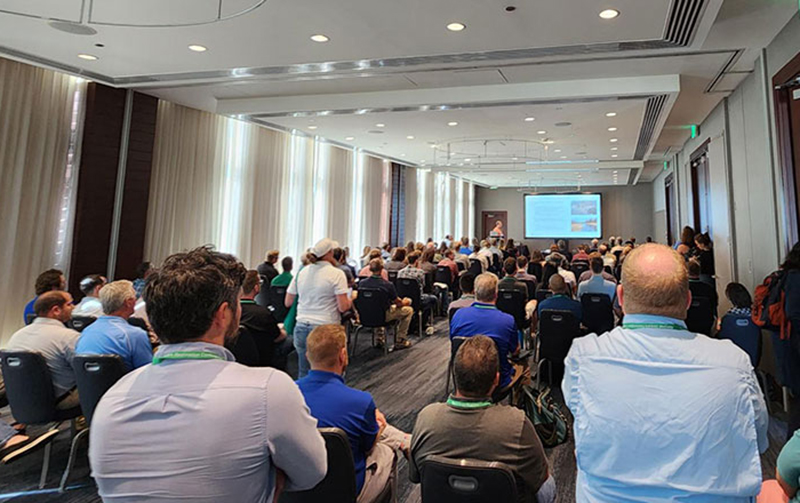
Community Outreach in Oregon
During the Oregon Family Forest Convention, Biohabitats’ Construction Bioregion Team Leader Matt Koozer and Assistant Construction Project Team Leader Jordi Kellogg hosted a tour of the Suter Creek habitat restoration project. Located in George, Oregon, on the property of the Oregon Outstanding Tree Farmer of the Year, Dave Bugni, the project featured several log jams that Biohabitats Construction had installed in Suter Creek. “This was a great opportunity to showcase the work that our team put in place and to make new connections,” said Matt Koozer.

In attendance were partners from the Oregon Department of Fish and Wildlife, Oregon Department of Forestry, the Clackamas River Basin Council and several timber property owners. “This project is a small part of the broad reaching efforts in the Clackamas basin that includes dam removals, helicopter placed large wood structures, culvert removals, side channel reconnections and other fish passage improvements. We look forward to continuing our work with these partners in the basin in the years to come.”
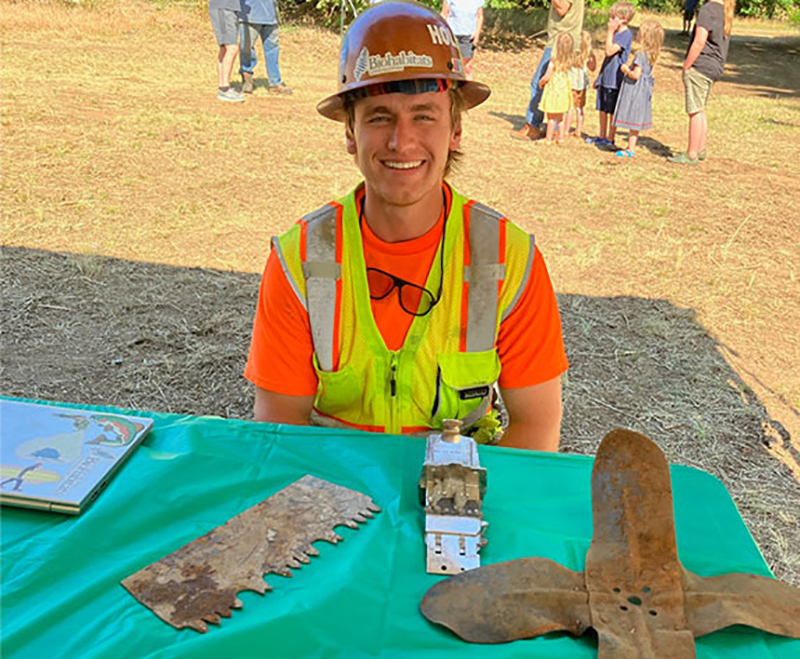
Removing Balm Grove dam and helping restore fish passage to Gales Creek was incredibly rewarding for Biohabitats, and so was sharing the success of the project with community members and collaborators! Originally constructed to create an area for swimming and boating, the obsolete dam altered flows and impeded fish passage since the 1930s. After removal, wooden structures were installed downstream to improve habitat complexity. Now that the 3-foot tall by 80-foot-wide dam is gone, coho salmon, Pacific lamprey, winter steelhead, cutthroat trout and other native fish species can swim upstream and use miles of habitat that was inaccessible for decades. Thank you to everyone who came out to the Gales Creek at Balm Grove Dam Open House to celebrate the results of our efforts with Clean Water Services!
Rocking Baltimore Harbor
In June, the Waterfront Partnership of Baltimore held its annual “Floatilla,” an event that draws paddlers to the Inner Harbor for a safe, supervised paddle and a rally for a clean and accessible Baltimore Harbor.
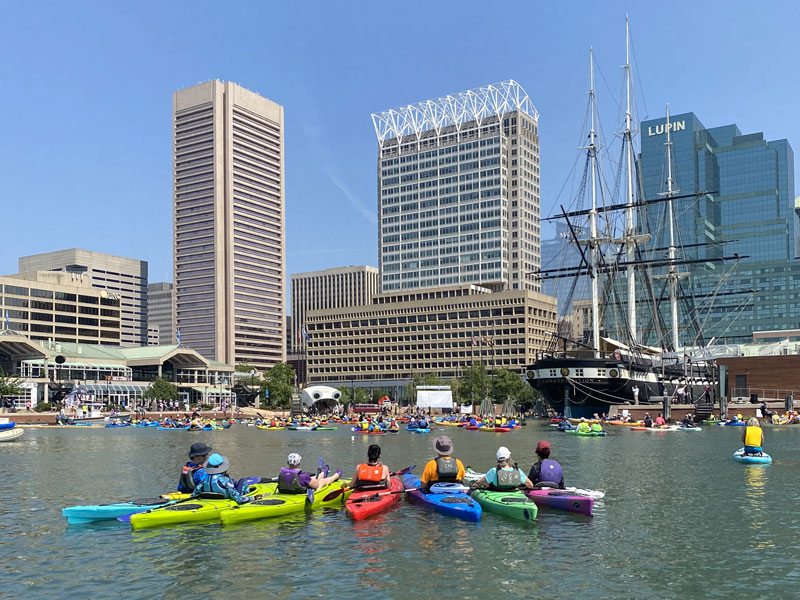
This year, Biohabitats had a face-melting good time providing safety support and rocking out at the 6th annual Floatilla with the Baltimore-based rock band Thrillkiller, who led participants in an inspiring rendition of Queen’s “We Will Rock You.”
Bio-Bonding and Planting in our own Backyard
At Biohabitats, we honor trees and their benefits year-round, but sometimes, extra work is needed to care for the trees in our community. On Earth Day 2023, while Biohabitats team members across the country gathered in Baltimore to celebrate our transition to a Perpetual Purpose Trust, we took some time to plant native trees and remove invasive species in a public park near our Chesapeake/Delaware Bays Bioregion office. It’s always a good day to plan a forest clean up or tree planting of your own!
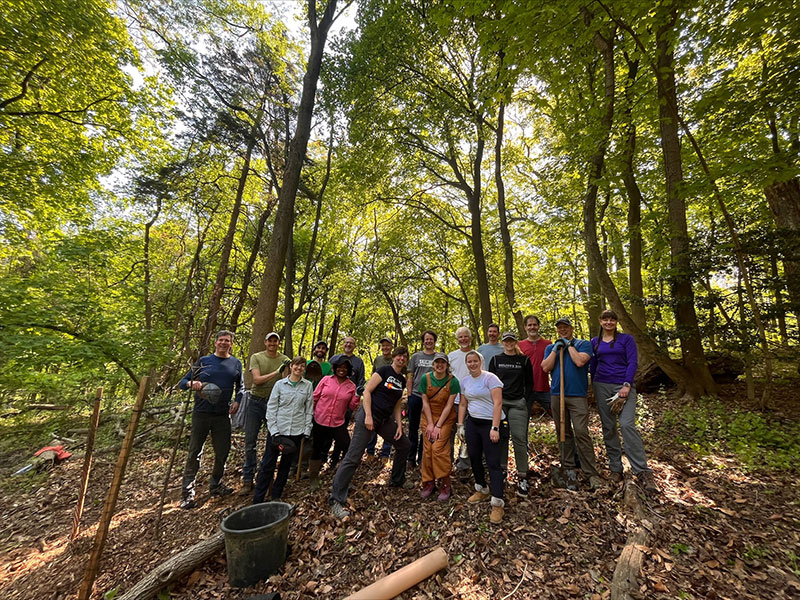
Upcoming Presentations and Events
September 22: In collaboration with UConn Plant Science and Landscape Architecture and the Connecticut Green Building Council, ASLA Connecticut is hosting Ecological Approaches to Landscape Design + Green Infrastructure, a two-part symposium and continuing education program. Join Biohabitats’ Jennifer Dowdell bright and early for “Centering Landscape Ecology and Biodiversity in Campus Planning and Design,” a discussion on how principles of landscape ecology and regenerative design can be applied to landscape planning at the scale of the university campus.
September 22: Tee up for the Maryland Stream Restoration Association’s 2023 Jim Gracie Scholarship Golf Tournament to raise money for the Jim Gracie Memorial Scholarship. Established in 2021, the scholarship aides disadvantaged students with a passion for the environment who want to pursue an education in the field of natural resources. Say hi to our team while you’re out on the green and enter the raffle for a chance to win a handmade charcuterie board donated by Biohabitats!
October 1-3: At the 2023 SER Mid-Atlantic Chapter Conference, get into this year’s theme “Urban Wetlands: Ecosystem Restoration Success Stories,” with a presentation and field trip to Teaneck Creek Park. Hosted by Biohabitats’ Kevin Dahms, New Jersey Sports and Exposition Authority’s Terry Doss, and Bergen County Department of Parks’ Adam Strobel, this trip to the site of a thriving wetland restoration project is not to be missed!
October 5: MEGA-ECO: A Symposium on Very Large-Scale Landscape Projects presented by the Ian L. McHarg Center for Urbanism and Ecology and Penn Globalwill bring together representatives from major ecological restoration projects across the globe to explore cross-border approaches to protecting biodiversity and mitigating the effects of climate change. Biohabitats President Keith Bowers will serve on a panel with other experts to discuss connectivity, anti-desertification, watersheds, and metropolitan development.
October 7: The South Carolina Environmental Law Project’s 14th annual Wild Side, presented by Biohabitats, is your chance to celebrate your lawyers for the wild side while enjoying delicious local cuisine, live music, and waterfront views. Don’t miss this year’s featured speaker Michelle Mapp, the ACLU of South Carolina’s Equal Justice Works Law Fellow.
October 8-12: Expand your knowledge with technical sessions about engineering developments and conservation solutions at the Association of Conservation Engineers 62nd Annual Conference in Fredericksburg, Texas. While you’re there, check out the dam good presentation “The Original Ecological Engineer: How Can Beavers Help with Natural Resource Protection and Recreation Development?” with Biohabitats’ Sydney Salzwedel and Michael Lighthiser.
October 22-26: Join Biohabitats’ Tom Denbow at the upcoming North American Lake Management Society’s 43rd International Symposium: Great Lakes, Local Solutions, to learn about the Sandusky Bay Ecosystem Restoration during Session H5 with Tetra Tech’s Kevin Kratt, The Nature Conservancy’s Ashlee Decker, and Baird & Associates’ Gordon Thomson.
October 27-30: Learn, grow, and connect with more than 6,000 landscape architects and allied professionals at the upcoming ASLA 2023 Conference on Landscape Architecture! Live the theme and Scale Up your practice and business with five engaging sessions featuring Biohabitats team members.
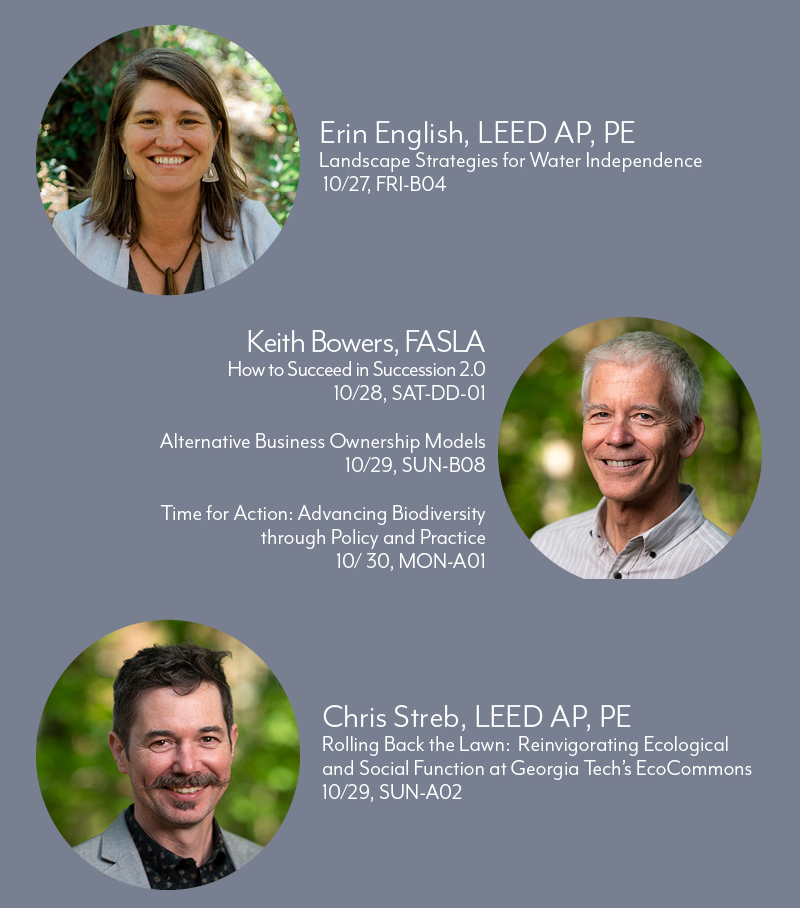
In addition to inspiring talks, we look forward to the award ceremonies, where we will celebrate all ASLA Professional Award-winners, including three projects we were honored to have been involved with: The University of Texas at El Paso Transformation, The Chattahoochee Riverlands, and Reimagine Middle Branch.
And… we’d be lying if we didn’t admit that we’re pretty excited about another award. Earlier this summer, we learned that we are being recognized as the recipient of American Society of Landscape Architects 2023 Landscape Architecture Firm Award. The award is the highest honor that the ASLA may bestow on a landscape architecture firm, and we do not take it lightly.
“Biohabitats is honored and humbled to receive this prestigious award from ASLA,” said Biohabitats Founder, Keith Bowers. “This spotlight on our ecologically focused, cross disciplinary work illuminates the power of all design firms to urgently address climate change, biodiversity loss, and environmental justice. We need to rewild the world.”
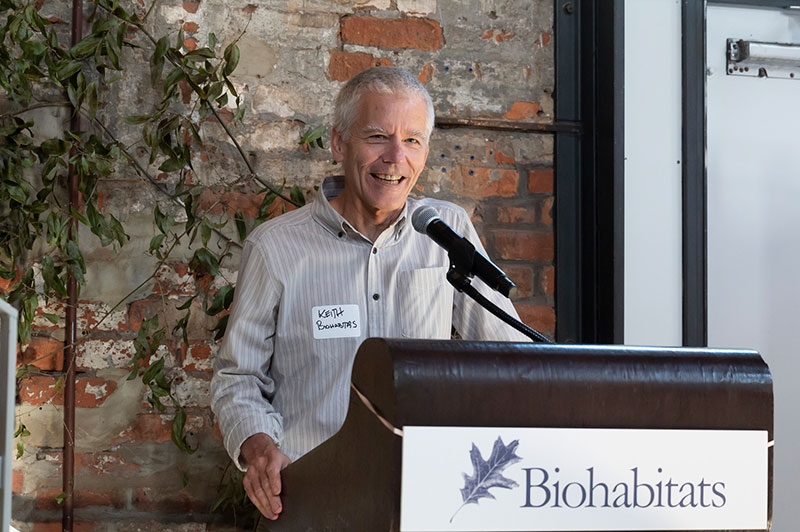
November 2: Registration will open on October 2nd for the Nature-Based Exchange Compendium Celebration! Visit the Clemson Design Center for appetizers, networking, and ecologically focused vendors while celebrating the release of the full Nature-Based Exchange Compendium. Biohabitats has enjoyed being on the core planning committee for the Nature-Based Exchange workshop series for the past 2 years, and we hope you’ll join us to discover what’s next for the Exchange.
People
Meet our Newest Team Members!
Please join us in welcoming Helen Little, Caroline Hildebrand, Nate Wadley, and Emma Podietz to the Biohabitats team! Can you guess which new team member wanted to be a children’s book illustrator? Who once watched a raccoon eat a whole bag of stolen muffins? How about the woodworker who made a green roof, aquaponics system, and a beehive? Whose favorite book is The Lord of the Rings: The Two Towers? The wise speak only of what they know on the Rhizome blog.
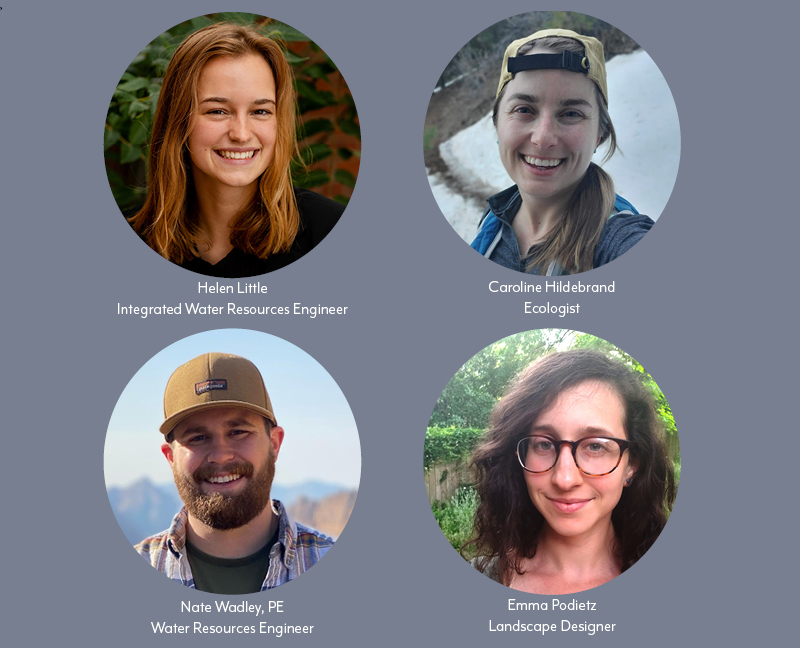
Promotion Commotion
This quarter, five dedicated team members have been recognized not only for the quality of their work, but also for the uncompromising integrity they bring to it. We are delighted to announce and celebrate their recent promotions!
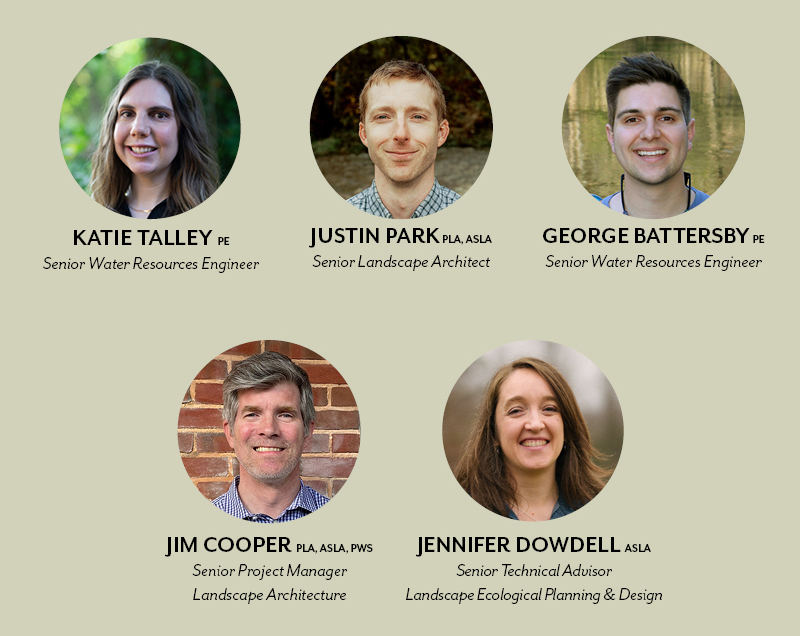
Our Extraordinary Spring/Summer Interns
Biohabitats’ Interdisciplinary Internship Program, which prioritizes candidates from HBCUs, HACUs, and TCUs, is designed to provide people of color and women with the opportunity to explore career pathways within the environmental consulting world. Our interns gain practical, hands-on experience on real projects, expanding their skillsets and future career opportunities. This year’s cohort of spring/summer interns did just that.
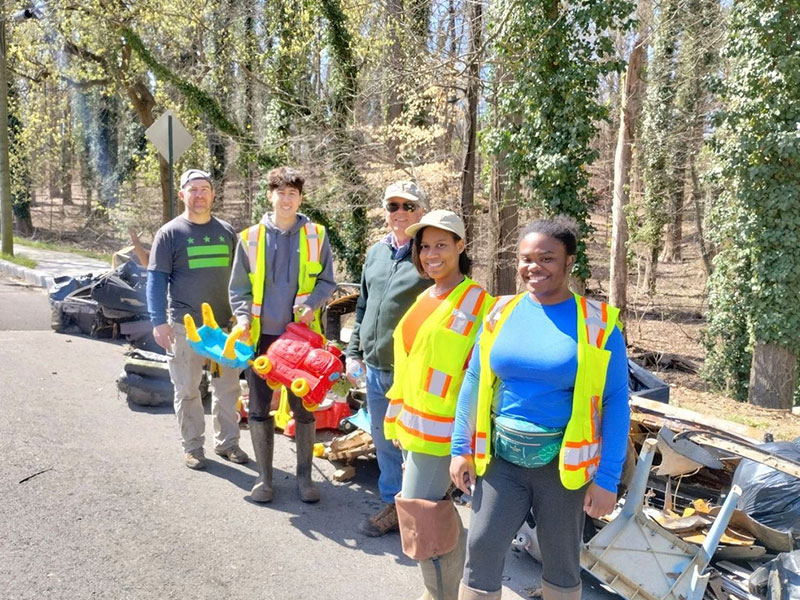
Kayla Brown is pursuing a Masters degree in environmental engineering at Morgan State University. Kayla found that the exposure to stream and wetland restoration she gained through the internship aligned well with her research on the use of biochar for removing pollutants from water. Marci-Ann Smith, a Master of Landscape Architecture graduate from the University of Maryland, was able to apply the experience she gained in understanding urban ecology to her passion for urban wildlife spaces and her thesis project to restore habitat and green space along a neglected highway that bisects a Baltimore neighborhood. Uzoma Aneke, an environmental engineering MS student at the University of Maryland Baltimore County, intends to pursue a career focused on climate change. Through her internship experience, she was able to perform field work and conduct engineering and water resources studies related to stream and wetland restoration projects in the Maryland/DC/Virginia region. Paul Soh-Koo Wisner is an undergraduate student studying environmental science and economics at Johns Hopkins University. Paul’s internship provided him not only with his first opportunity to collect ecological data (by assisting with wetland delineation) but also to help analyze it and see how it informs design.
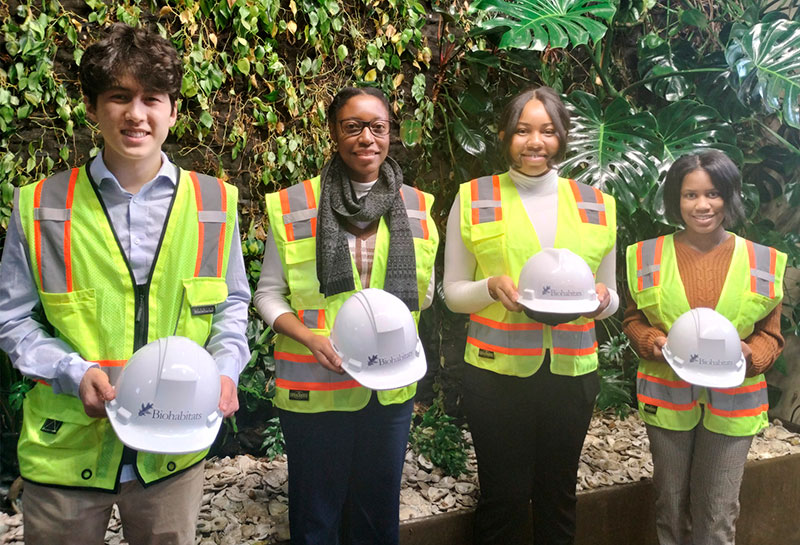
All of our interns shared presentations about their work and internship with the entire Biohabitats team, and both Paul and Kayla wrote about their experiences on the Rhizome blog. Summer may be nearing its end, but Kayla, Paul, Uzoma, and Marci-Ann’s careers are just beginning, and we can’t wait to see what they do next!
LAF Ignite Program
We had a special visitor in the Chesapeake & Delaware Bays Bioregion office this August! Charlye Stewart is part of the first cohort of students in the Landscape Architecture Foundation’s Ignite program, which provides scholarships, internships, and mentorships for BIPOC students. A landscape architecture student at UPenn, Charlye holds an undergraduate degree in Wildlife Ecology and Conservation. She is interested in planning and designing for fauna—specifically in urban areas. Shortly after her visit to Biohabitats, after learning of the subject of this issue of Leaf Litter, Charlye offered to share her perspective on artificial intelligence and its role in landscape architecture.

Biohabitats is a sponsor of the Ignite program, and Senior Landscape Architect/Urban Ecologist Aiman Duckworth is honored to serve as a professional mentor.
Award-Winning Team Members
Biohabitats’ quarterly Golden Acorn award is presented to a team member who has excelled in demonstrating our mission to “Restore the Earth and Inspire Ecological Stewardship.” The gold color symbolizes purity of purpose in protecting and defending nature, and the acorn symbolizes strength of resolve. Golden Acorn winners are awarded $1000 to donate to non-profit organizations of their choice. The most recent winners of the Golden Acorn award were Geospatial Manager and Data Scientist Chris Rehak, Operations Assistant Jensen Noel, Operations Team Leader Adam Feuerstein, and Senior Technical Advisor Jennifer Dowdell, all from our Chesapeake & Delaware Bays Bioregion. Chris chose Southern Appalachian Wilderness Stewards as the recipient of his Golden Acorn donation. Jensen chose Irvine Nature Center to receive her donation. Adam chose to give his donation to Fairtrade America. Jennifer directed her donation to the National Sports Center for the Disabled as well as the Acres of Ancestry Initiative/Black Agrarian Fund. Congratulations to Chris, Jensen, Adam, and Jennifer!

